Home
|OpenVision HD Real-Time Radiography X-Ray System
Looking for OpenVision DX?
OpenVision HD is a handheld real-time radiography x-ray system that helps radiographers quickly screen insulated piping systems for indications of corrosion, such as pitting, scaling, external wall loss, and wet insulation. It can also be used for heat trace and weld location mapping.
We designed OpenVision HD with aircraft-grade aluminum housings and stainless steel reinforced joints for long term use in demanding environments.. It's ideal for screening piping systems with common insulation and cladding.
Make the right call every time with high-definition visual data that’s easy to interpret. Real-time images and videos help inspectors immediately identify the exact location and extent of any CUI present so you can prioritize your next steps and allocate resources more efficiently.
ACCURATELY DETECT CUI
CMOS advanced imaging technology produces high-contrast, high-resolution images and videos that reveal small CUI defects and subtle changes in material density, making it easier to detect the early stages of CUI.
Get Consistent Data
An optional image stabilizer provides stable in-motion inspection to reduce operator fatigue, ensure consistent, reliable data from start to finish, and reduce wear and tear in C-arm components.
MAXIMIZE PRODUCTIVITY
New handles have multiple mounting points on the C-arm and an integrated trigger to enhance ergonomics, prevent operator fatigue, simplify operation, and maximize your productivity.
MINIMIZE DOWNTIME
Folding the c-arm minimizes opportunities for damage when moving around the plant in areas like scaffolding or ropes.
MAXIMIZE INSPECTABLE AREAS
The extendable detector arm helps you access difficult inspection points in complex piping systems.
OpenVision HD utilizes a highly collimated X-ray beam to direct X-rays toward the object being screened and away from the operator.
Warning lights, a warning screen, and an audible ensure the operator is aware before X-rays are generated and during operation. A trigger interlock ensures the X-ray tube is not accidentally activated.
On average, OpenVision HD can screen piping at a rate of 30 seconds per foot (0.30 m). Actual speed of screening is dependent on the operator, piping, and number of CUI indicators found during screening.
When defects are found, a still image and targeting image are typically taken and the piping is marked for follow-up. While the time for marking indicators in this way slows down the speed of inspection, we find the overall CUI screening is up to 60 times faster than traditional methods.
With OpenVision HD, you can view external defects as small as 0.010 inches (250 microns) on insulated piping.
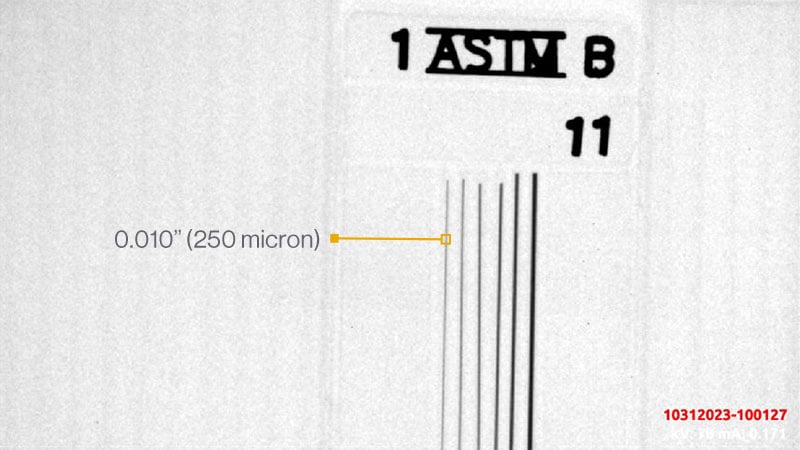
When using OpenVision HD, flaking scale will typically appear as irregular, fragmented patterns or clusters, contrasting against the uniform appearance of the pipe's interior. These patterns may vary in density, and they can obstruct the clear view of the pipe's wall, making it distinct from the normal smooth pipe-to-insulation interface. Always be sure to compare areas of concern with clean sections of the pipe to confirm the presence of flaking scale.
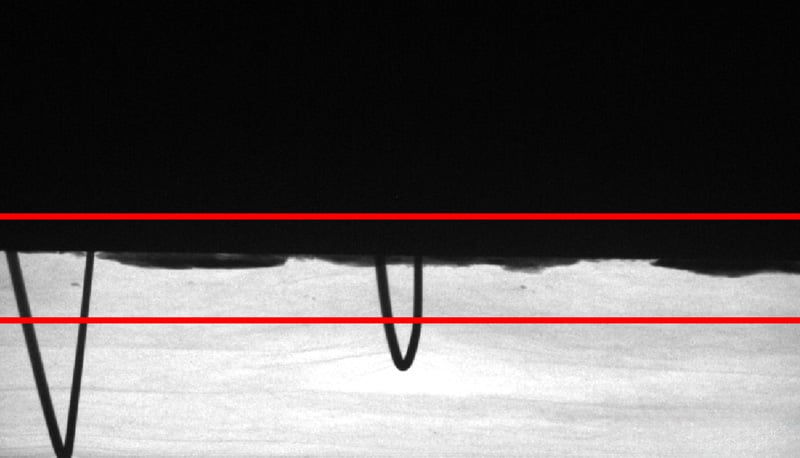
When using OpenVision HD to screen for pitting corrosion, it will typically display small, localized dark spots or discontinuities at the pipe-to-insulation interface on the live X-ray video. These pits can vary in size and may appear individually or in clusters, depending on the severity of the corrosion. If pitting is found under areas where insulation has been previously stripped and cleaned, the pits may appear more pronounced and clear, making them easier to identify. Example:
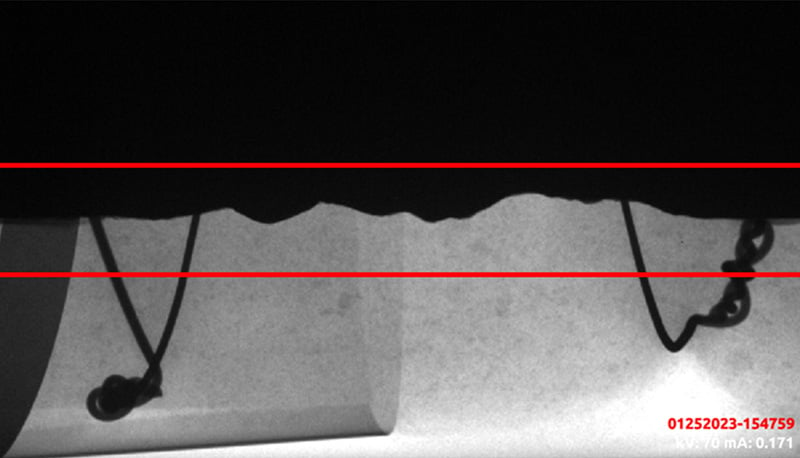
When using OpenVision HD to screen piping, piping in good condition will generally show a sharp contrast and have a well-defined pipe-to-insulation interface without any signs of thinning. If the pipe's insulation has been stripped and cleaned, the surface should look smooth and free from any defects.
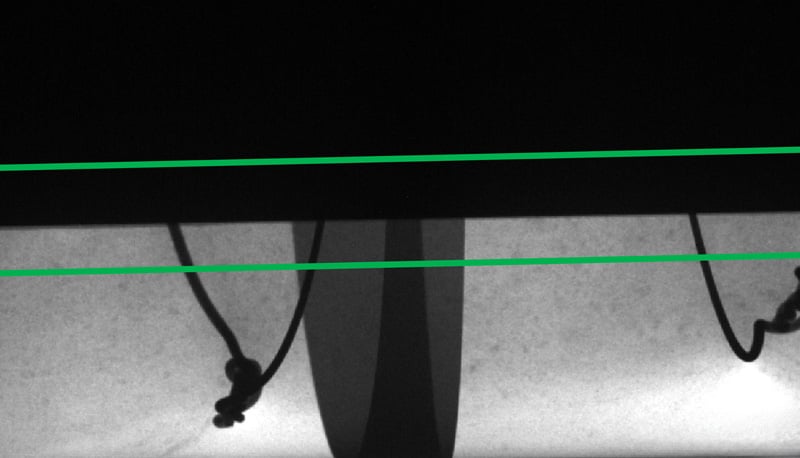
You can set up and start using OpenVision HD within 1-2 minutes. OpenVision HD is safe to use during normal business operations and processes.
In most cases, no exclusion zone is required to operate OpenVision HD. If a country's regulation requires an exclusion zone, it's so small that breakdown takes seconds
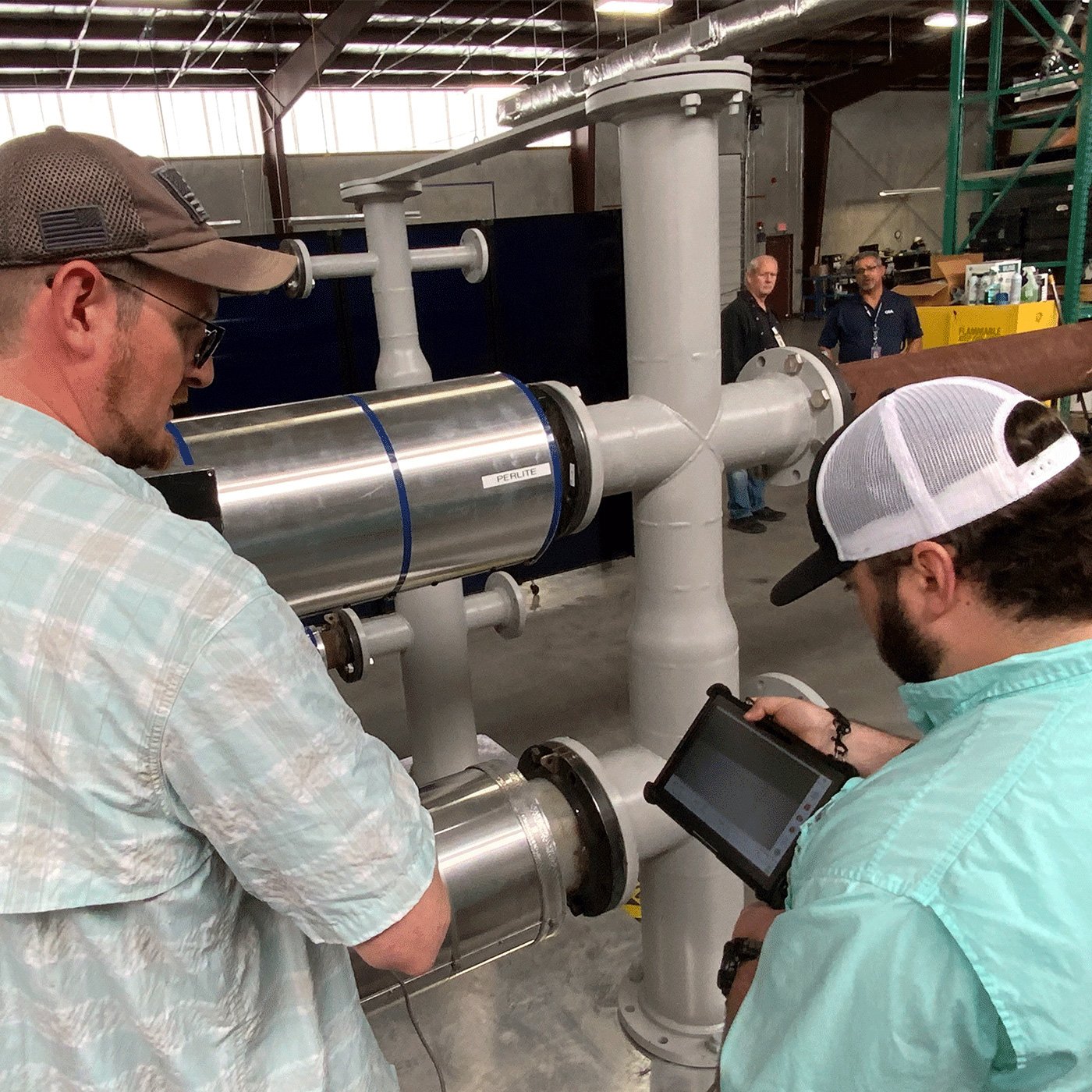
QSA Global, Inc. offers a two-day course at our OpenVision Learning Centers in La Porte, TX and Pilsen, Czech Republic. The course includes a combination of classroom and hands-on practical sessions. An expert in industrial radiography, approved by QSA Global, Inc.'s Radiation Protection & General Safety Committee (RPGSC), provides the training for this course.
Upon successfully completing the written and practical exams, students will receive a training certificate confirming their proficiency.
QSA Global, Inc. Headquarters
40 North Avenue
Burlington, MA 01803
Customer Service
800-225-1383
Send Feedback